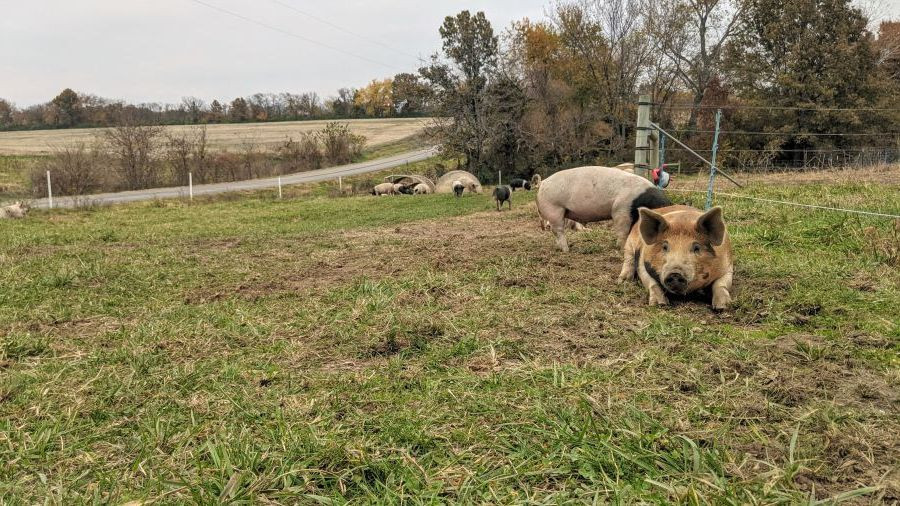A Problem That's Growing By The Acre
posted on
June 20, 2023
Last month, I was prepping my drone for an upcoming Virtual Farm Tour project (🤫). I had flown it out to get a shot of our home property when the overwhelming need for regenerative farming once again become apparent to me.

Here is the photo I took of our 10-acre Concordia farmstead in May. This is the original Kesten farm, our "home base", purchased by my parents in 2011.
What stood out the most in this photo wasn't the beautiful green of our farm, but rather the amount of brown surrounding us.
Now that's the problem...
The brown you see isn't rock or even dead grass; what you're looking at is soil. Exposed soil. And it begins with tillage.
Tilling is the practice of turning the soil over in the hopes of bringing nutrients to the surface and putting vegetation under it, making the soil ready to plant in. Tilling also aerates the soil. But on the flip side (no pun intended,) it disrupts the soil structure and kills much of the life under the surface.
Then after harvest, many farmers leave their crop ground tilled or exposed "as is" over the winter. Then they come back in the spring and do it all again.
This agricultural method creates several issues:
1) Excess Heat - by leaving the soil without cover, the surface gets too hot for bugs and microbes to survive. (Whatever survives the tillage, that is.)
2) Soil Erosion - when soil is left exposed and without structure, it gets carried away with wind and rain, leaving farmers with less topsoil and increasing the chance of dust storms.
Our local city lake has an ever-growing island in it, thanks to the amount of loose soil that gets washed in with each rain.
3) Carbon Emission - plants put carbon into the soil and in turn produce oxygen. But open soil emits carbon back into the atmosphere.
Okay, fun fact: with all this escaping carbon also comes heat. Clouds release condensation when the temperature has dropped below them. Now you tell me why every year we watch rain storms part around us, and why our region as a whole is dealing with more and more insane drought. 💡
Now, let's explore Big Ag's more recent alternative method: Spraying. To reduce tillage, many farmers have turned to "no-till" farming methods. This leaves soil structure intact and reduces the amount of time it's exposed. However, it requires a necessary evil.
Herbicides are sprayed on no-till crop fields to prepare them for planting. And while it solves some of the issues with tillage, it's not the ultimate solution.
These chemical sprays are harmful to everything they come in contact with, and eventually end up in our water systems. No bueno!
My conclusion: there is no effective way to produce grains on this scale without major damage to the planet, and if there is we haven't found it yet.
This method of farming is harmful to our environment in many ways, and the problem is quickly growing acre-by-acre, year-by-year as the demand for grain rises.
Today, more than half of Missouri's farmland is being tilled or sprayed for crop production, over 15 million acres.
Rather than focus on feeding the world with large-scale mono-crop grain farms, we should be focusing on the small-scale regenerative agricultural methods that leave the soil intact, create sustainability for local communities, and work to improve our environment.
We need hundreds of thousands more farms like ours if we are going to put a dent in the damage done so far, but it is possible!
Thank you for supporting farms like ours and the collective mission to change the agricultural standard. The greatest change will come when it's demanded by and accountable to the consumer.



